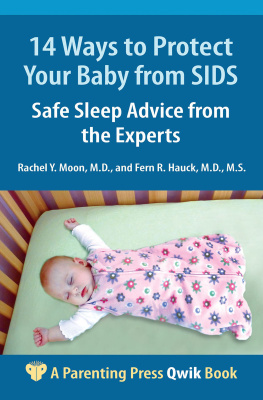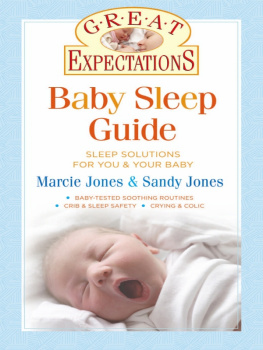James J. McKenna - Safe Infant Sleep: Expert Answers to Your Cosleeping Questions
Here you can read online James J. McKenna - Safe Infant Sleep: Expert Answers to Your Cosleeping Questions full text of the book (entire story) in english for free. Download pdf and epub, get meaning, cover and reviews about this ebook. year: 2020, publisher: Platypus Media, genre: Home and family. Description of the work, (preface) as well as reviews are available. Best literature library LitArk.com created for fans of good reading and offers a wide selection of genres:
Romance novel
Science fiction
Adventure
Detective
Science
History
Home and family
Prose
Art
Politics
Computer
Non-fiction
Religion
Business
Children
Humor
Choose a favorite category and find really read worthwhile books. Enjoy immersion in the world of imagination, feel the emotions of the characters or learn something new for yourself, make an fascinating discovery.

- Book:Safe Infant Sleep: Expert Answers to Your Cosleeping Questions
- Author:
- Publisher:Platypus Media
- Genre:
- Year:2020
- Rating:3 / 5
- Favourites:Add to favourites
- Your mark:
Safe Infant Sleep: Expert Answers to Your Cosleeping Questions: summary, description and annotation
We offer to read an annotation, description, summary or preface (depends on what the author of the book "Safe Infant Sleep: Expert Answers to Your Cosleeping Questions" wrote himself). If you haven't found the necessary information about the book — write in the comments, we will try to find it.
In the world of pediatric care, sleep safety guidelines are controversial and often misguided. Health professionals broadly discourage all forms of cosleeping, which, along with the potentially devastating consequences, makes deciding how and where your baby should sleep both confusing and frightening. Parents who cherish the closeness, security, and warmth of cosleeping are finding themselves conflicted, concerned, and exhausted.
Cosleeping, a term which encompasses sleeping in the same room or on the same bed as your infant, is a common parental instinct driven by physiology and seen throughout human history. Despite mainstream opposition, thousands of parents continue the practice, whether intentionally, accidentally, or out of necessity.
So, why do current medical guidelines insist that cosleeping is unsafe? What is the difference between SIDS and SUID, and are they related to cosleeping? What should parents do to make a safe sleep space for their infant? If a family chooses to cosleep, how should they respond to reproach from friends, family, or medical professionals?
In Safe Infant Sleep, the worlds authority on cosleeping breaks down the complicated political and social aspects of sleep safety, exposes common misconceptions, and compares current recommendations to hard science. With the latest information on the abundant scientific benefits of cosleeping, Dr. James J. Mckenna informs readers about the dangers of following over-simplified recommendations against the age-old practice, and encourages parents to trust their knowledge and instincts about what is and is not safe for their baby.
This book offers a range of options and safety tips for your familys ideal cosleeping arrangement. These include variations of roomsharing and bedsharing, and introduce the concept of breastsleeping. This term, coined by Dr. McKenna himself, is based on the inherent biological connection between breastfeeding and infant sleep, and provides readers with everything they need to know about safely sharing a bed with their baby. Complete with resource listings for both parents and professionals, this book teaches you how to confidently choose a safe sleeping arrangement as unique as your family.
James J. McKenna: author's other books
Who wrote Safe Infant Sleep: Expert Answers to Your Cosleeping Questions? Find out the surname, the name of the author of the book and a list of all author's works by series.







